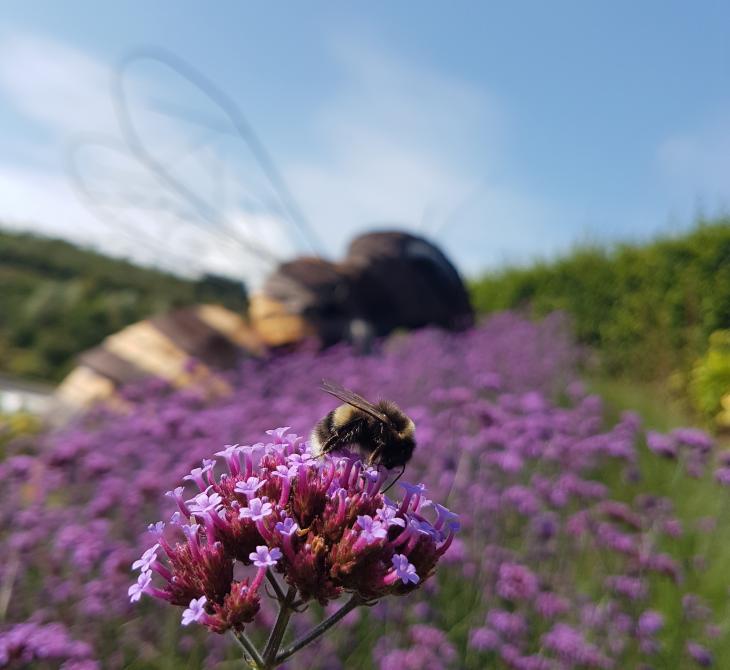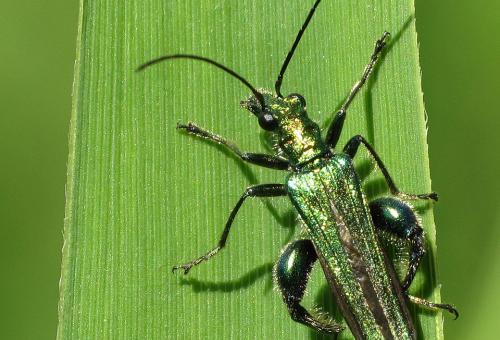Make a pledge, keep climate positive
You have the power to make a difference to the future of our planet and all that call it home. From recycling and reusing, to growing your own food – there’s so much you can do. What will you pledge?
We’re closed some weekdays until 12 February, for essential maintenance. Check our opening times before booking.
Create a Buzz guide to pollinating insects

Honey bees pollinate over a hundred different fruits and vegetables. In Britain, the number of honey bee colonies has almost halved since the 1950s. Increased use of pesticides (especially neonicotinoids) is especially harmful. Steer clear of plants or seeds treated with neonicotinoids! The Eden Project is a protected reserve for the native dark honey bee (pictured).
Bumblebees are ‘buzz pollinators’ – grabbing hold of flowers then vibrating their flight muscles to shake tightly packed pollen loose. One third of the UK’s 25 bumblebee species are endangered. Help them by planting flowers that will bloom in all seasons. Please do not buy imported bumblebees as they can introduce novel pests and diseases.
There are over 240 species of solitary bee in the UK. They live entirely alone. They also don’t make honey. However, they’re great pollinators as they collect pollen from a wide range of plants. We can help look after them by providing sheltered spots for them to nest.
After bees, hoverflies are the UK’s most important pollinators. Our homegrown species are joined each year by billions of hoverflies which fly in across the Channel, helping pollinate our crops, whilst their larvae eat trillions of aphids!
To attract hoverflies and their pest-munching larvae, plant flowers with easy to reach nectar, like fennel or cow parsley. The hoverfly pictured is enjoying feeding from a celandine flower.
Adult butterflies ‘taste’ with their feet, seeking out the right plant to lay their eggs on. Caterpillars of Red Admiral, Peacock and Small Tortoiseshell butterflies all feed on nettles. By providing plants for butterflies and their caterpillars, a well thought out garden can attract more than 20 species
As well as visiting flowers in our gardens and countryside, research suggests moths pollinate crops like peas, soya and oilseed rape. Moths and their caterpillars often need different habitats – diverse gardens are best for both.
About a quarter of the UK’s 4,000 beetle species are pollinators, including the swollen-thighed beetle, whose larvae live in the dried stems of plants. Delaying cutting back until spring provides homes for baby beetles.
Solitary wasps and their relatives, social wasps, are nectar-sipping pollinators and pest-munching predators. Every summer, to feed their young social wasps alone capture around 14,000 tons of insect pests – the equivalent of 2,200 African bull elephants. Yes they can sometimes be annoying but they’re super-helpful too!







